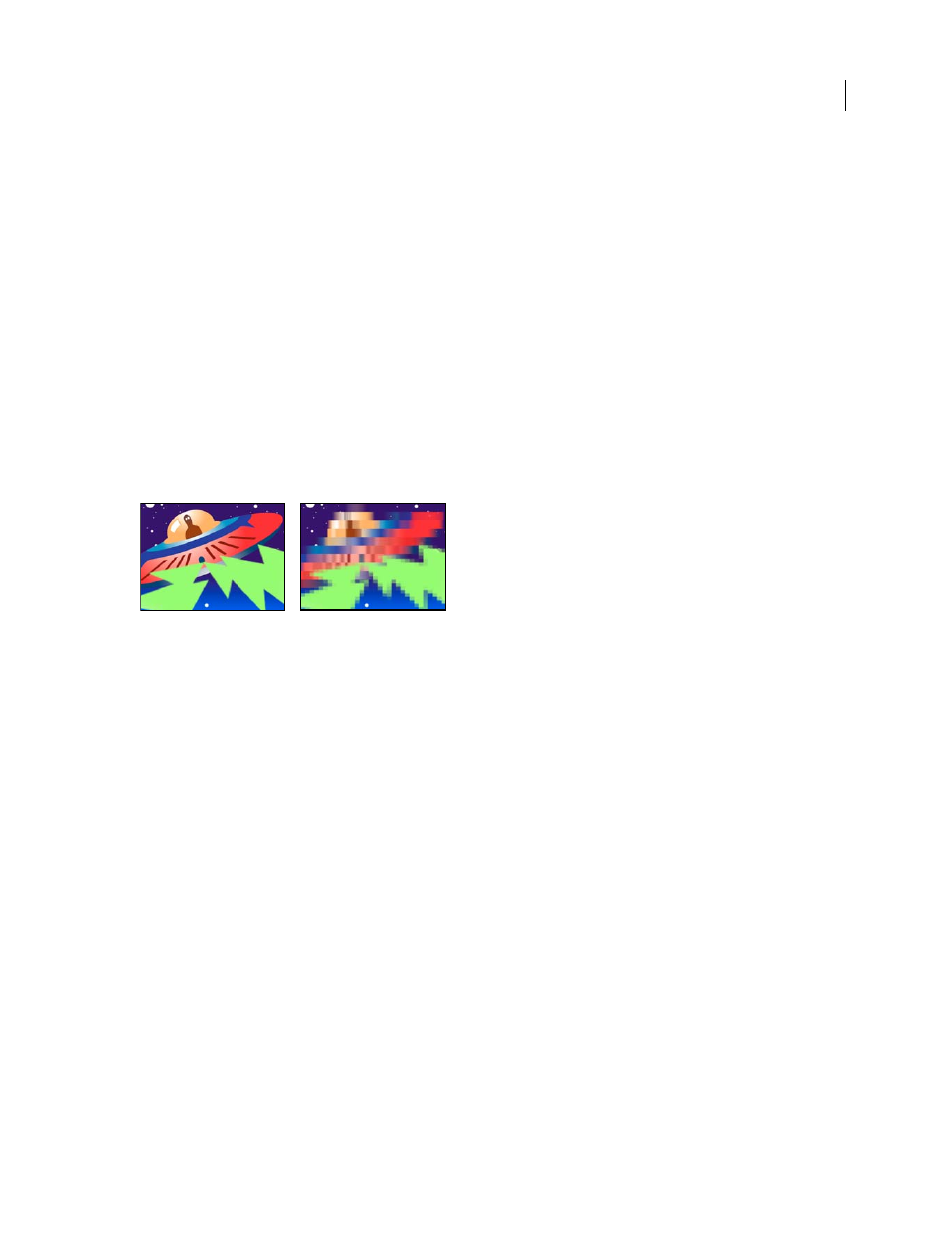Mosaic effect, Motion tile effect – Adobe After Effects CS3 User Manual
Page 525

AFTER EFFECTS CS3
User Guide
520
Color Looping
The shape of the gradient curve to use if A & B Colors is selected for Glow Colors.
Color Loops
Creates multicolor ringing in the glow, if you select two or more loops. A single loop cycles through the
gradient (or arbitrary map) specified for Glow Colors.
Color Phase
Where in the color cycle to begin color loops. By default, color loops begin at the origin of the first loop.
A & B Midpoint
The midpoint specifies the balance between the two colors used in the gradient. Lower percentages
use less of the A color. Higher percentages use less of the B color.
Color A, Color B
The color of the glow if you choose A & B Colors for Glow Colors.
Glow Dimensions
Specifies whether the glow is horizontal, vertical, or both.
Mosaic effect
The Mosaic effect fills a layer with solid-color rectangles, pixelating the original image. This effect is useful for
simulating low-resolution displays and for obscuring faces. You can also animate it for a transition. At Best quality,
the edges of the rectangles are anti-aliased.
This effect works with 8-bpc and 16-bpc color.
Original (left), and with effect applied (right)
Horizontal/Vertical Blocks
The number of blocks in each row and column.
Sharp Colors
Gives each tile the color of the pixel in the center of the corresponding region in the original image.
Otherwise, each tile is given the average color of the corresponding region in the original image.
Motion Tile effect
The Motion Tile effect replicates the source image across the output image. When you change the placement of the
tiles, it uses motion blur to accentuate the movement if motion blur is enabled.
This effect works with 8-bpc color.
Tile Center
The center of the main tile.
Tile Width, Tile Height
Dimensions of tiles as a percentage of the input layer dimensions.
Output Width, Output Height
Dimensions of the output image as a percentage of the input layer dimensions.
Mirror Edges
Flips adjacent tiles to form mirror images. If Phase is set to 0, selecting this option causes the edges of
the layer to be mirrored with the surrounding tiles.
Phase
The horizontal or vertical offset of the tiles.
Horizontal Phase Shift
Offsets tiles horizontally instead of vertically.
